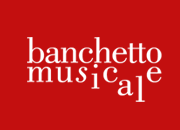October 6, Monday, 4 pm
Museum of Applied Art, Arsenalo g. 3A
Valentine Bakfark: The Hungarian Orpheus
Lute music by Bakfark (c1526/1530–1576) and his contemporaries
Jacob Heringman lute, Great Britain
The Hungarian lutenist and composer Valentin Bakfark’s date of
birth was formerly believed to be 1507 on the evidence of his epitaph, according to which he died
in 1576 at the age of 69. However, other documents make it probable that he was born between 1526
and 1530.
As a young boy Bakfark showed musical talent and was taught at the Hungarian royal court by a
learned court musician. Although the exact identity this person is obscure, some characteristics
of Bakfark’s works suggest an Italian teacher, possibly Mathias Marigliano of Milan.
Bakfark’s life and work is closely connected with Lithuania and Poland. In 1549, after being
rewarded for his playing by King Zygmunt II August, he appeared among the Polish court musicians.
A couple of years later he married a widow from Vilnius and within ten years amassed considerable
wealth: he bought a house in Vilnius in 1559; in the same year some property was given to him by
the king; and he also had estates in Vilnius’ environs. His social status, fame and popularity
increased immensely during his years in Lithuania and Poland.
Bakfark’s service in Vilnius lasted until 1565. Afterwards he served at the Habsburg court in
Vienna and then entered into the service of the Prince of Transylvania.
Bakfark and his family all died in Padua during the plague of 1576.
Bakfark’s extant works, all for solo lute, date from his Polish and Lithuanian years. Many of them
are intabulations of motets, chansons and madrigals by Arcadelt, Gombert, Clemens non Papa, Josquin
and others. His nine fantasias are composed in a three- or four-part contrapuntal texture with
consistent use of points of imitation, and his ricercari are among the first such compositions for
the lute. All compositions are ornamented with remarkable taste and variety. The frequent use of
stereotyped formulae, typical of many contemporaneous lutenists, is absent from his output.
The American-born lutenist Jacob Heringman studied with Jakob
Lindberg at the Royal College of Music in London, and later with Pat O’Brien in New York.
Based in England since 1987, he has established himself as one of the world’s most respected
and most innovative solo lute players, and as a much sought-after ensemble player performing
regularly throughout Europe and North and South America, and making many CD and radio recordings
of medieval and renaissance music with leading English ensembles, including The Rose Consort of
Viols, Fretwork, Musicians of the Globe, The Kings Singers, the New London Consort, Virelai and The
Dufay Collective. As a continuo player, Heringman performed and recorded with The King’s Consort,
the English Baroque Soloists, The Parley of Instruments and the Taverner Consort, among others.
In 1993, he left the continuo circuit to focus on renaissance solo and ensemble projects.
Jacob Heringman has given solo recitals throughout Europe and in North America. As an accompanist, he
has performed and recorded lute songs with Michael Chance and Barbara Bonney, among others. He is also
half of a duo with the mezzo-soprano Catherine King, with whom he has toured extensively and recorded
four lute song discs, all of which have been greeted with high praise from reviewers.
In 1990, Jacob Heringman founded the group Virelai with the viol player Susanna Pell, the singer Catherine
King, and the flute-player William Lyons. Virelai specialises in music of the late 15th and early 16th
centuries.
Jacob Heringman teaches the lute at Trinity College of Music, London, and is increasingly in demand as a
teacher at various early music summer schools.

